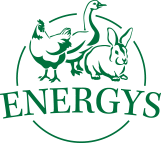Rabbits
Poultry
Laying hens
Quails
Guinea pigs
Pigs
Ostriches
Sheep and goats
Pigeons
Pheasants
Forest animals
Pig sire breeds and synthetic lines
In the Czech Republic, breeders work with sire breeds (currently represented, in particular, by White Sire, Duroc and Piétrain), including their synthetic lines (SL 34, SL 38, SL 48 and possibly SL 68) and pig dam breeds.
At the start of the 1970s, meat pigs were produced in accordance with a hybridisation programme, which was based on using the hybridisation effect through targeted crossbreeding. Three or four breeds were crossbred, where the basis was a dam that was cross-bred of the F1 generation, with which a sire from breeds with higher meat levels was mated. And because the sires are used as the fathers of piglets for fattening, these breeds are referred to as sire breeds. The foundations of sire breeds here were laid fifty years ago by imported livestock from the Duroc, Hampshire and Belgian Landrace.
Duroc
The Duroc (D) breed was imported from the USA. They are pigs with a medium to large body frame, very solid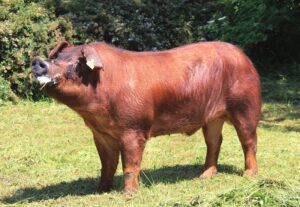 constitution, compact body, reasonably hefty and with a solid skeleton. Its breed characteristic is rusty-red colouring in a wide range of shades. Their ears are quite long and droop. In the case of livestock for slaughter, all the most important parts display the animal’s meatiness. The meat quality is very good. In addition to meat utility, a Duroc has very good growth intensity and nutrient conversion.
constitution, compact body, reasonably hefty and with a solid skeleton. Its breed characteristic is rusty-red colouring in a wide range of shades. Their ears are quite long and droop. In the case of livestock for slaughter, all the most important parts display the animal’s meatiness. The meat quality is very good. In addition to meat utility, a Duroc has very good growth intensity and nutrient conversion.
Hampshire
The Hampshire (H) breed was also first imported from the United States of America. It has a medium to large body frame, a solid constitution, a solid body structure and a reasonably strong skeleton. Its head is lighter, its ears straight. This breed is characterised by its dark-black colour with a white saddle, which covers the shoulder and both upper limbs. All the most important parts are nice and meaty and the meat quality is good. It excels in terms of the intensity of growth and has acceptable conversion of nutrients.
Belgian Landrace
Belgian Landrace (BL) pigs were imported from Belgium and the former Federal Republic of Germany. It is a breed with a medium-to-large body frame with a solid, sufficiently strong skeleton. The head is light, the ears drooping. The most important meat parts have an excellent type of meat with a medial dorsal line going to the back. The breed is also valued for achieving very good parameters in fattening. The skin and bristle colour is white.
When the central management of breeding was relaxed after November 1989, additional sire breeds were imported, specifically White Sire and Piétrain.
White Sire
The White Sire (WS) breed imported from England was the sire line of the Large White. The difference is in the utility type, where dry expression of the meat utility type with the medial line on the back and the ham is required. The skin and bristles are white, the body frame is medium to large with a solid skeleton (a little larger than in the case of the dam line). The parameter monitored is very good growth ability and excellent nutrient conversion.
Pietrain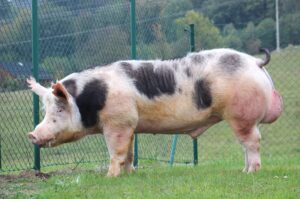
The Piétrain (Pn) breed was imported from the former Federal Republic of Germany, where they created a modern breed with a larger body frame that tended not to be stressed. It is a typical sire breed with the highest meat utility. It stands out thanks to its larger body frame with a solid and sufficiently massive skeleton. Its head is lighter, its ears straight. The black-and-white or spotted colouring is characteristic for the breed. Animals for breeding have a meaty utility type with excellent muscle mass in all the important parts and a medial dorsal line ending at the tail.
Synthetic lines
The solid constitution of the Duroc, excellent fattening properties of the White Sire and high meat utility of the Piétrain were the reason for creating synthetic sire lines. The breeding public therefore started to work with sire lines SL 34 (WS x D, D x WS), SL 38 (D x Pn, Pn x D), SL 48 (WS x Pn, Pn x WS), as well as SL 68 (H x Pn, Pn x H), which have the ability to satisfy the requirements of both producers and processors.
Related posts
24. August 2021
In December 2020, fifty-three pig farms in the country were under the organic farming regime. Most of them are breeding black-footed pigs, which have been classified as genetic resources since 1992. The Hungarian curly-coated pig is a similarly hardy and undemanding breed, which is also growing in popularity with our breeders.
25. May 2021
In the Czech Republic, breeders work with sire breeds (currently represented, in particular, by White Sire, Duroc and Piétrain), including their synthetic lines (SL 34, SL 38, SL 48 and possibly SL 68) and pig dam breeds.
18. May 2021
Commercial pig breeders use both breeds that excel thanks to their reproduction parameters and breeds that pass on to their offspring good growth abilities, resilience and good meat quality. As a part of the hybridisation programme, the Pig Breeders Association and breeders work with dam breeds (Czech Improved White and Czech Landrace) and sire breeds.
19. June 2020
In order to assure that the pigs are in a good state of health, it is essential to feed them grain feed as a basis. Selection of these feeds is limited not only by the farmer’s potential, but also the chosen farming method. For example, the rules of ecological farming place emphasis on providing organically…
11. May 2020
Pigs were gradually moved from outdoors into enclosed styes, which developed into sophisticated stye capacities utilising technologies not only for automated feeding and water supply systems, but also for controlling the stye environment, in commercial farms. Ecological farming trends have been popular for some time in Europe in relation to demand for healthy products from…
Related products
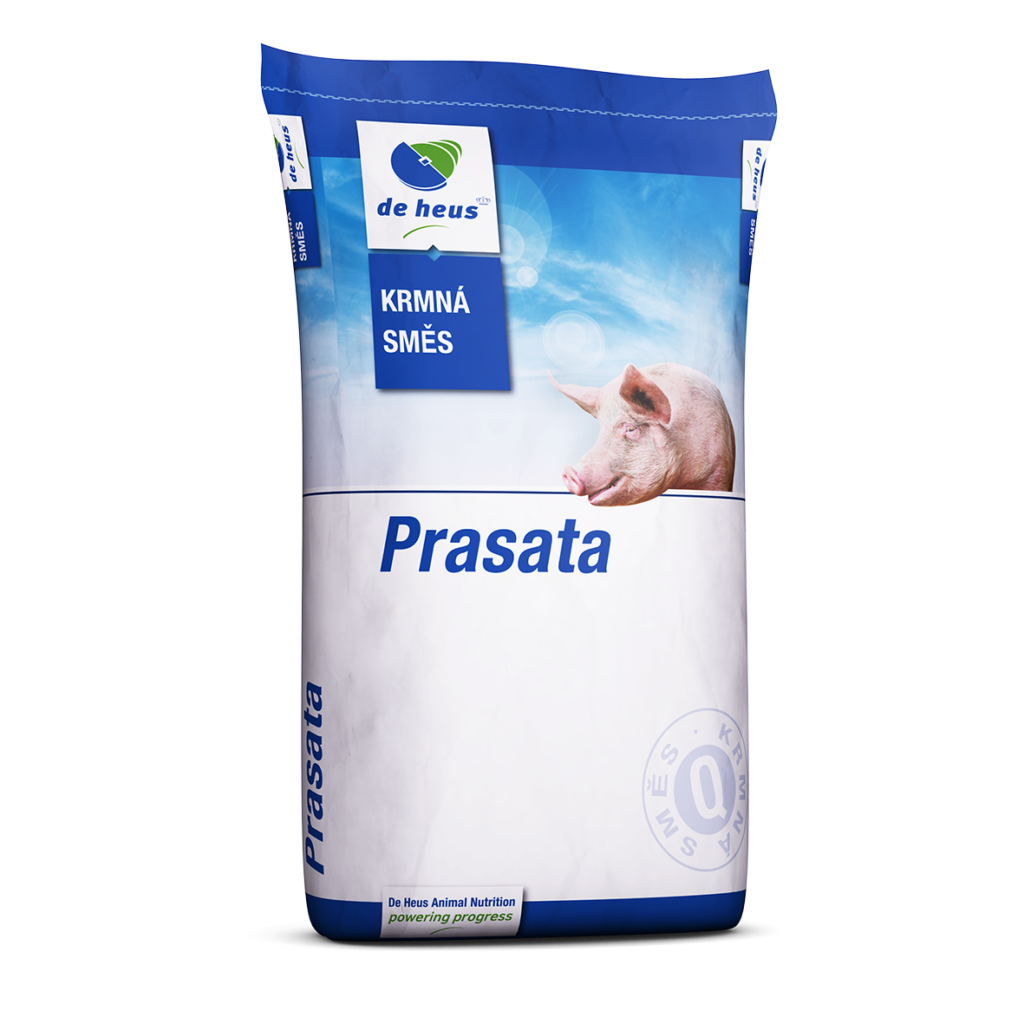
PIG UNI 15
A mashed concentrate for fattening pigs, which is mixed with cereals depending on the fattening phase in a ratio of 11 – 16 %. It is a garauntee of high growth.

KPK VITAL
Professional complete feed mixture for lactating sows. Its composition supports milk production in the required quality and quantity.

KPB VITAL
Pelleted complete feed for dry and pregnant sows, providing all necessary nutrients. Pellet size: 3.5 mm.

A3 MAXI
A complete feed mix for fattening pigs over 60 kg. Its make up supports fast growth allied with low consumption of feed during the final phase of fattening.

A2 MIDI
A high quality granule for the feeding of pigs from 35 to 60 kg. A balance of the nutrients needed is the basis for an excellent state of health, fast growth and high meat content.

A1 MINI
Granulated feed mix for the first phase of fattening pigs, that is from a live weight of 15 to 35 kg. The nutrients it contains support an excellent state of health, fast growth and high meat content in your pigs.
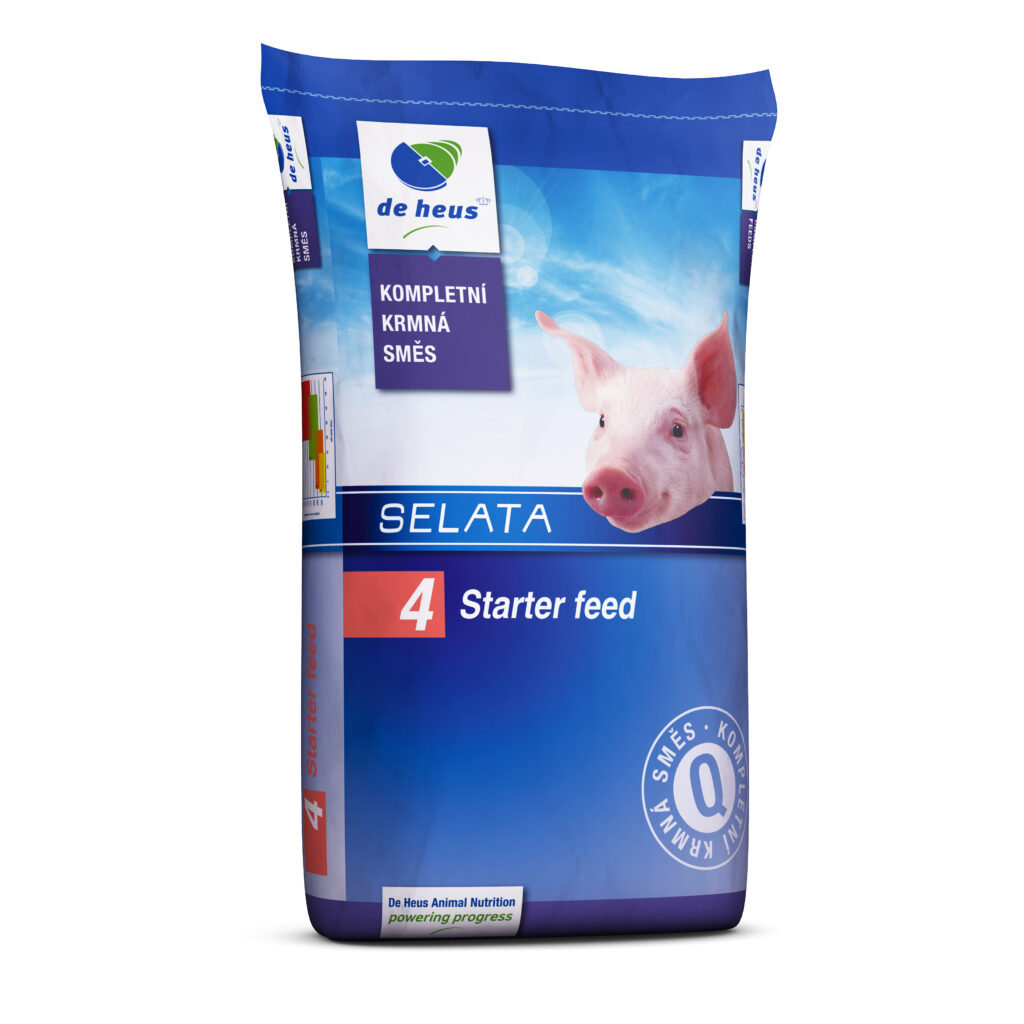
A1 START
A professional feed intended for weaned piglets with a live weight of 12 kg of up to 12 weeks of age. It provides an ideal start to piglet growth. This feed is followed by fattening mix A1 Mini or the Pig Uni 15 concentrate.
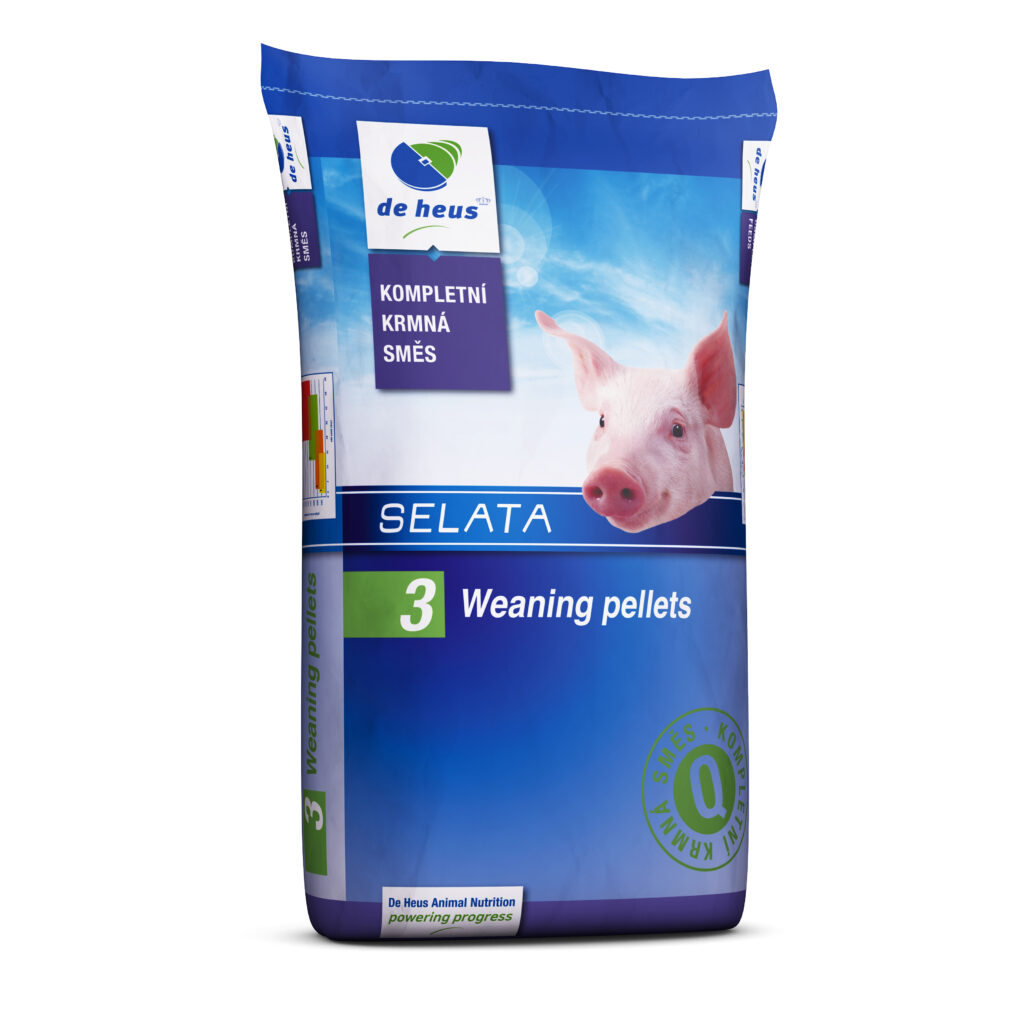
WEANING PELLETS
A prestarter for piglets from 10 days of age to 14 days after weaning from the sow. Its structure of 2 mm granules ensures problem free intake and overcoming the weaning period. Among other things it contains whey and fish flour which ensures fast growth in piglets.
